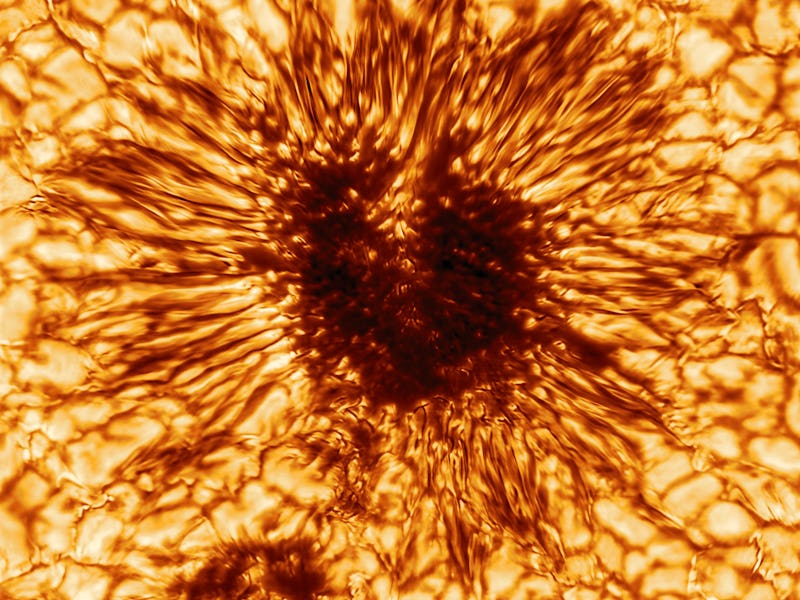Scientists have found the Eye of Sauron ... on the Sun
The image reveals new details about the mysterious solar cycle.

The most detailed image of a sunspot ever recorded was sort of random.
On January 28, 2020, the National Science Foundation pointed its telescope toward the Sun while its systems were still being integrated and, much to the surprise of the observatory team, a historic sight was recorded.
Sometimes, science just happens to you.
The most detailed image of a sunspot reveals its intricate structure.
The science foundation's Daniel K. Inouye Solar Telescope, located on the island of Maui in Hawaii, happened upon the 10,000-mile-wide sunspot.
Even though the sunspot resembles the massive Eye of Sauron from the Lord of the Rings (not to be confused with the nebula M 1-42, in the constellation Sagittarius), this sunspot is a mere speck on the surface of the sun.
The eye of Sauron.
What causes sunspots — They are caused by the magnetic field inhibiting the transfer of energy on the surface of the Sun through the process of convection, where hot fluid rises and cooler fluid sinks.
The image reveals the structure of a sunspot in great detail, with an influx of hot and cold gas shown as streaks that spiral out from the dark center.
Friedrich Woeger, the telescope's instrument systems scientist at the National Solar Observatory, recalls the team's excitement as they pointed the telescope towards a sunspot for the first time in January and captured it in great detail.
"What we physicists typically do is compare our observations with models, the models try to predict what we are seeing on the Sun," Woeger tells Inverse. "In general, these models are very good but the devil is in the details."
The image was released last week, along with an article about the Inouye telescope, in the Solar Physics Journal.
HIGH-REZ SUN PICS —The new image is two and a half times higher in resolution than previous ones, allowing the team at the solar observatory to resolve the small scale structures on the Sun.
Although they are small, sunspots are the only visible indication of solar activity. The more sunspots that can be observed across the surface of the Sun, the more active the Sun is and vice versa.
Solar activity largely depends on the Sun's magnetic field. The Sun’s magnetic field goes through a periodic cycle in which the south and north poles essentially switch spots, and it takes another 11 years or so for them to switch back.
"We have observations that show what we were to expect, but the details are different and they are very revealing of the inner processes," Woeger says.
The sunspot's center has a high concentration of magnetic fields, suppressing heat within the Sun from reaching its surface. The temperature of the dark center reaches more than 7,500 degrees Fahrenheit, which is still relatively cooler than the surrounding temperatures on the Sun.
Why it matters to you, an earthling — Because they serve as clues as to how active the Sun is, sunspots are associated with solar wind eruptions, coronal mass ejections, and solar flareups, which are all part of solar activity.
"One of the things that is very important is that we get a view into the smallest details so that we can improve our models, and improve how well we can predict eruptions on the Sun," Woeger says. "Sunspots are magnetic structures on the Sun that can cause explosions, and these explosions can affect us on Earth."
When these solar flares reach Earth, they penetrate through Earth's protective layer of the atmosphere, known as the magnetosphere, and wreak havoc on our electric equipment and power grids, as well as orbiting spacecraft and astronauts.
On August 7, 1972, a massive solar storm erupted from the Sun's surface, disrupting radio waves, telecommunication networks, and power systems by triggering an intense magnetic storm on Earth.
In the past 20 years, scientists have come a long way in understanding the different processes that govern the Sun's activity but it is still a work in progress. The better they can understand solar activity, the better they can predict the solar storms that erupt from the Sun.